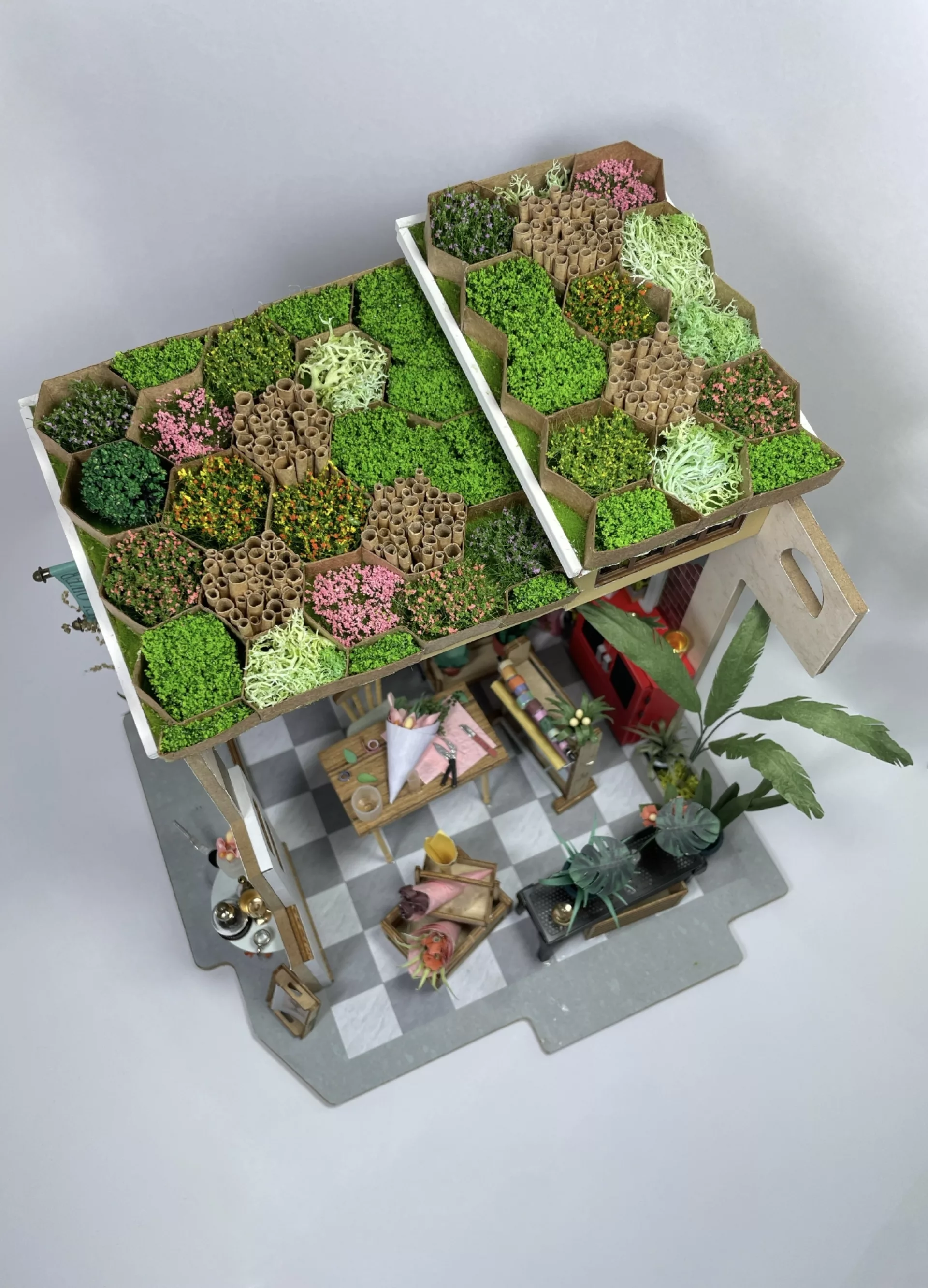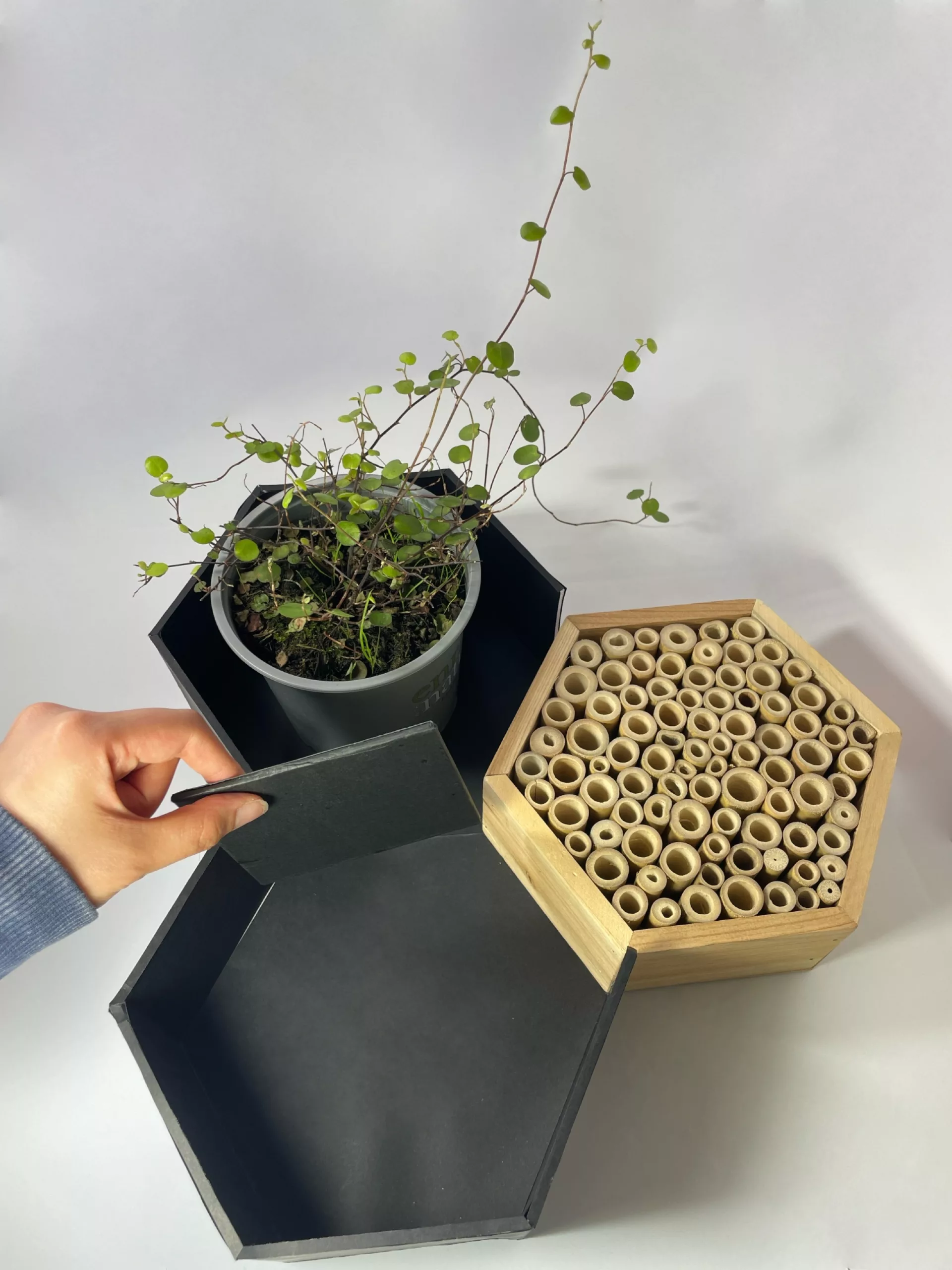
Urbanisation presents serious environmental challenges, especially with the loss of habitat for insect pollinators. In busy urban centres like Auckland's Queen Street CBD, the effects of pollution and urban heat islands worsen these challenges. Wild bee populations, essential for pollination and biodiversity, have declined globally over recent decades, impacting urban gardens and nearby agriculture. This project introduces an eco-friendly solution: green roofs for Queen Street. These green rooftops will create self-sustaining ecosystems on city buildings, supporting biodiversity and promoting a healthier urban environment.
This small-scale store model, featuring an Eco-Tray installation, illustrates how green roof systems can seamlessly integrate into urban landscapes, transforming commercial spaces like Queen Street into thriving ecosystems. Inspired by the hexagonal structure of beehives, the trays support food sources and bee nesting opportunities. The model is based on a flower shop, representing a natural link to pollinators and showcasing how even modest rooftop areas can foster sustainable urban growth.

This Eco Tray Supporting app assists users in tracking and managing the health of their roofs. The app allows users to monitor soil moisture, sunlight, humidity, and bee colony performance while providing customisation features for alerts and notifications. Each plant tray is equipped with a SIM and detection system for real-time data tracking, and the app facilitates community engagement through forums, videos, and maps to locate other green trays. The app ensures the long-term sustainability of green roof installations by reducing human interference with bee colonies and simplifying maintenance.

The realistic size of the Eco tray offers better visual representation for audience. Each hexagonal side is detachable, allowing users to customise tray volumes to meet diverse plant and bee needs, demonstrating the flexibility and scalability of this design for different urban environments. The model underscores the potential for wide-scale application, contributing to both biodiversity and sustainable urban development across the city.
